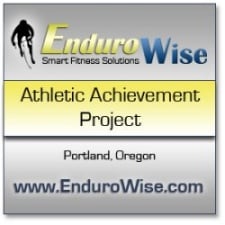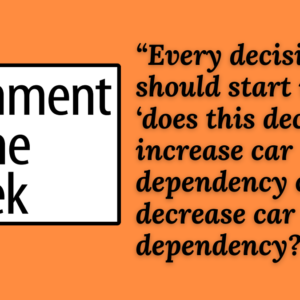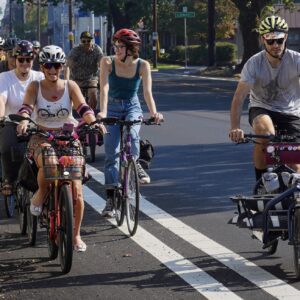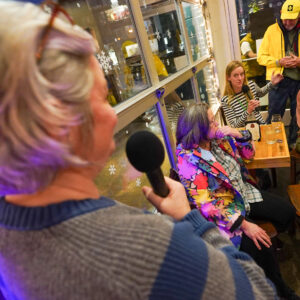
(Photo © J. Maus)
Welcome to Part Five of our six-part, guest article series on bike sharing in Portland.
The series is written by Tom Miller, chief of staff for Portland City Commissioner and Mayor-elect Sam Adams. Yesterday, Tom laid out what’s at stake for Portland in choosing a bike share vendor.
In today’s article, Tom examines some of the key questions that must be answered before PDOT moves forward with this idea.
Part Five: Questions to answer if we want to “get it right”
We’re not sure yet we know what getting it right entails.
Mayor-elect Adams has tasked a team of good minds at PDOT to develop a baseline. Who is the target rider and how do we best provide for them? If we’re simply moving people from transit or foot to bikes it’s a poor investment.
When we mention a multi-million dollar investment in bikes, the eyes of Roger Geller, the City’s ever-dedicated bike coordinator, grow large with ambition. “Is a bike share program the best use of those dollars?” Roger correctly wonders aloud.
Is our target rider traveling from home to transit and back? If that’s the case, does the free half-hour model of Lyon work? Maybe the system needs to allow a rider to take the bike for multiple days. Can a system work logistically if a rider can take a bike for multiple days?
“Our ambition to become a more sustainable city is significant, but our actions in execution of that ambition must be applied methodically.”
What about the city’s hills? How many gears are necessary to accommodate our target rider on our topography? What about our weather? Should we pick up our stations seasonally like Montreal? Or should we aspire for year-round ridership by non-enthusiast “regular people” a la Amsterdam, a city of analogous weather?
Roger, like me, is neither skeptic nor blind supporter. Portland is a leader because we have a history of making smart decisions in a strategic manner. Our ambition to become a more sustainable city is significant, but our actions in execution of that ambition must be applied methodically.
Tomorrow, Part Six (the final piece in the series): The outlook for bike-share in Portland






Thanks for reading.
BikePortland has served this community with independent community journalism since 2005. We rely on subscriptions from readers like you to survive. Your financial support is vital in keeping this valuable resource alive and well.
Please subscribe today to strengthen and expand our work.
This installment got me thinking.
Although I’ve been rooting for a bike share system, I never really thought about the questions posed here. And I do understand that just replacing transit and foot traffic with bikes may not be the best use of funds.
Maybe we want to allow folks to more quickly make short trips (say less than a mile) in the inner city (both sides of the river). This would facilitate running personal or work errands during the workday.
Maybe we want to identify nodes around the city about a mile or two apart and allow efficient transport from one to another. To give an example of this, in my neighborhood I could see nodes such as Lloyd Center, Burnside and 28th, Hawthorne & 37th, Division & 20th. This would facilitate more general personal errands and shopping on more of a 24/7 schedule.
I’m not stating these to specifically suggest implementations. Instead, these show that the identification of the target rider and common usage can vastly affect the implementation of a bike sharing system.
I now have a better appreciation why the past process was halted in order to “get it right”.
Yeah, I think there are a lot of tricky issues with this – the bikes themselves – I think for most parts of SE, NE and Downtown Portland, 3 speed bikes would be just fine even for people in moderate shape – but I have a feeling people will perceive that they need more than that to ride comfortably, and so they might not try three speed bikes, assuming they’ll be too difficult. And of course, if you were going to have year-round bike share program in Portland, you’d have to have bikes that are well-outfitted for rain, which means fenders and maybe even skirt guards, and if you’re targeting people who want to go grocery shopping or that kind of thing – do you put baskets or panniers on them or something like that? There really is a lot to think through, I’m glad it’s being thought through, and I do still hope it happens… it’s good to know that if it does happen, it will have a good chance of being a good thing.